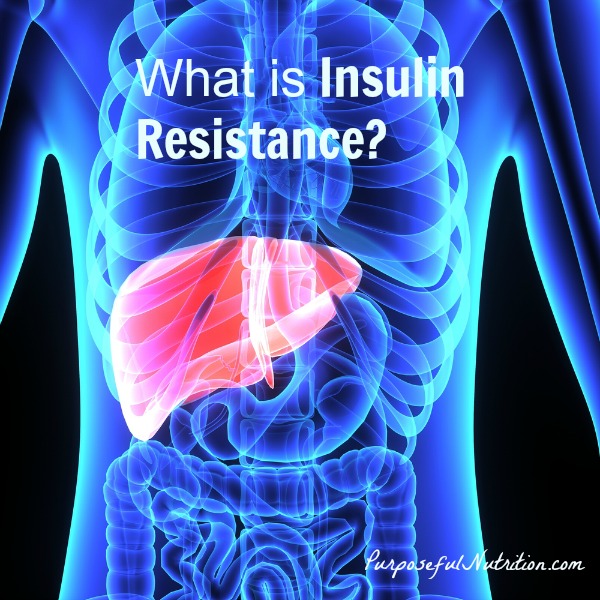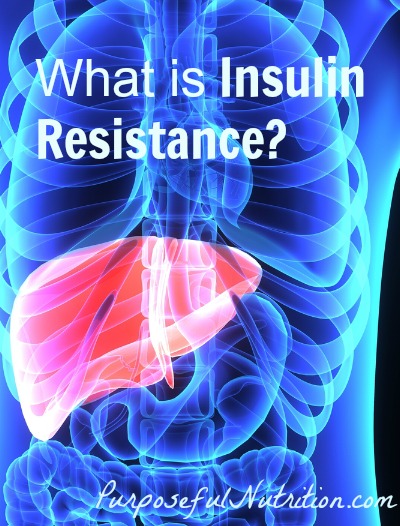This post may contain affiliate links which won’t change your price but will share some commission.

You may have heard the term insulin resistance? And you may be wondering what is insulin resistance and why does it matter, especially to me? I would like to give you a brief overview of what insulin resistance is and share with you why it matters so much to our health.
Insulin resistance is at the heart of diabetes, a disease in the western world that requires multi-millions of dollars in treatment and is decimating people’s lives in a very disturbing way. Although insulin is involved in both type 1 and type 2 diabetes, the diseases are very different. Type 1 is an auto-immune disease that can affect those of any age, but most often children and teens are affected. I am not addressing this type of diabetes in this article. Type 2 diabetes is the “lifestyle” disease that creeps up on most people, little by little and affects their ability to process sugar and energy properly in their body. According to the CDC, more than 29 million people in the USA have diabetes (both types), which is 1 in 11 people. Even worse, 1 in 4 people do not know they have it.
This does not even touch on the issue of prediabetes, those who have blood sugars leading into diabetes, but not high enough to diagnose yet or put on medication. Another 86 million people in the USA have prediabetes, 1 in 3 adults and of those 9 out of every 10 do not know. These are frightening statistics. (source) If you struggle with weight gain and have difficulty losing weight, you may be one of these 86 million people who have insulin resistance. Unfortunately there are few other symptoms of insulin resistance and it often goes overlooked, sometimes for years. But damage is happening in the body daily and it really does matter.
What is insulin resistance?
Insulin is a hormone that is released in response to increased levels of blood sugar in the blood to keep the body using glucose efficiently, using what is needed and storing what is not.
“Insulin instructs the liver to do two things.
- Stop making new glucose from its stores
- Switch to storage mode to produce glycogen. When full, produce new fat via De Novo Lipogenesis (DNL).” (source)
When a person has insulin resistance, insulin will tell the liver to stop making new glucose, but the liver will ignore the insulin and continue to produce glucose in the form of glycogen. The increased glucose in the blood will then cause the body to make more insulin. The liver also will continue to make new fat and store it in the liver, causing a fatty liver. There any number of theories about why this happens.
The insulin itself seems to be the cause of the problem, more insulin making the situation worse. Dr. Fung believes the insulin cannot enter the cell and resolve the problems, because the cell is already overflowing with insulin. So giving more insulin, as happens with type 2 diabetes, will only make the situation worse. The high blood sugar leads to high insulin levels which leads to fatty liver and insulin resistance which leads to high blood sugar and the cycle goes round and round. The fatty liver leads to high triglycerides in the blood as well, because the liver needs to send the excess fat somewhere, as the liver is not designed to store fat. The answer to all of this is to lower insulin, not add more into the body. This is based on the work and research of Dr. Joseph Kraft. (source)
This theory of overflow and full cells can be likened to a subway train stopping at a station to get more passengers, but when the doors open very few people can get on, because the cars are already full. Another theory known as the “lock and key” theory says the doors do not open far enough to let more passengers (sugar) in. Either way the glucose stays in the blood stream rather than the cells and so more insulin is produced. This is also known as metabolic syndrome.
Dr. Fung has a helpful story here in this blog post that helps to explain insulin resistance and demonstrate how insulin causes insulin resistance.
What can I do about it?
Based on the theory discussed above, if the cells are too full, the logical treatment is to empty the cells. The current system of treatment employs more insulin to push more glucose into the cells, but this does not work if the cells are already full. The best way to empty the cells of glucose is with the low-carb, high-fat diet (LCHF) or keto diets and intermittent fasting. This is because both of these interventions give the cells and body a break from more glucose. It allows the body time to recover and lower the amount of glucose and thus the amount of insulin in the blood, liver, and blood stream. It is possible to completely reverse type 2 diabetes or pre-diabetes by sustained changes in your diet and life. There is hope.
If you want to get started intermittent fasting join my free 10 day fasting challenge or buy my Guide to Intermittent Fasting. I also offer health coaching for those who want to lower their blood sugar levels through intermittent fasting and the LCHF diet in my private membership group for Purposeful Nutrition. And I have a targeted one on one health coaching program specifically for those who want to prevent diabetes as it is very doable once you realize how and why you want to avoid type 2 diabetes.

For more information:
Tim Noakes presentation on video on diabetes

Good explanation. The private membership group is also been very helpful also.